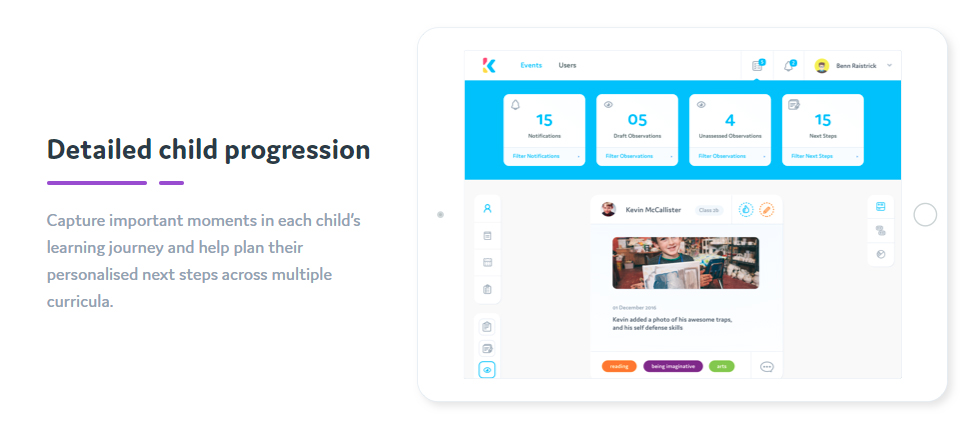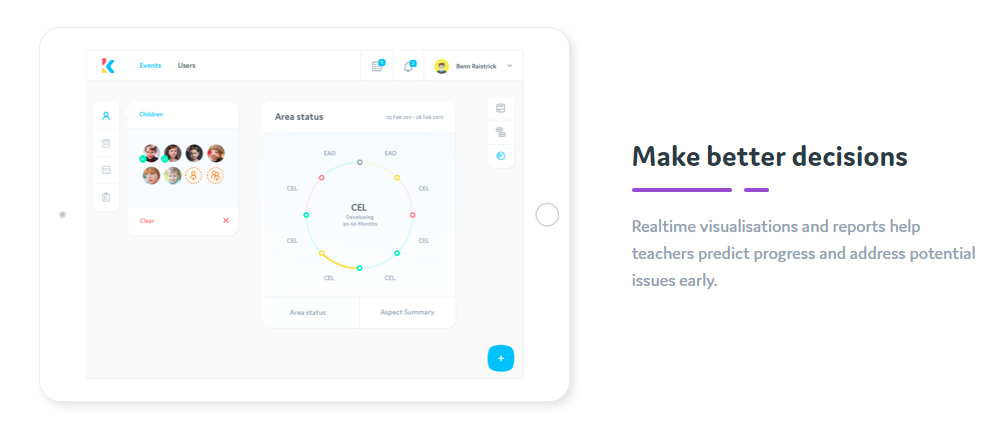From scores to written comments, verbal responses and summaries or the possibility of combing them all in order to generate a comprehensive narrative of a student’s progress - most teachers know what authentic assessment looks like. It is personalised, it is descriptive, and it is encouraging. Most of all, it should make a difference and give direction to the learner. Good teachers know what valuable feedback looks like and they also know that it must be delivered in a timely fashion and tailored in specific ways to make an impact.
The first component for any kind of genuine assessment and feedback is that of getting to know the students and their educational backgrounds, interests and academic goals. However, all of this comes at a cost and that is time. Teacher time is valuable and as we know, class sizes are not getting any smaller. From descriptive feedback, to assessments, to contributions and achievements, there lies the complexity of collation and organisation of all things said. How do you remember everything that you have said to a student, and have you remembered to jot it down to include in the final evaluation?
With AI growing in demand and offering a future of great promise, it comes as no surprise that there are now numerous technologies available in the marketplace to produce real-time, data-driven responses and personalised feedback and assessment for students. Artificial Intelligence platforms, such as Kinteract, provide for customised learning programmes, with the intention to improve and accelerate learning outcomes for students. This can start right from early years to university, creating a digital record for a lifetime of achievement and rewards.

Teachers using AI personalised learning tools, such as Kinteract, can make informed decisions based on their students’ outcomes and can steer the learning pathways for their learners so that they can accelerate at their own pace, some faster than others. As a result, students are offered interventions at just the right time with just the right amount of feedback to improve or accelerate learning. One size does not fit all, and this makes me wonder if we will see younger graduates in the years to come?
Assessment is truly authentic when students can take ownership, engage in and share their personal learning plans. Involving parents with very young children to support their development is a more powerful form of assessment than ever. By providing an immediate and personalised window to their child’s school day, carers can now be equipped with the knowledge they need to maximise on opportunities present and resolve any problems that may go unnoticed. We all know that children are unique and develop in various ways, and by utilising collaborative spaces, such as Kinteract, one can be reassured that no child is left behind.
With AI on the rise, there is no doubt that there is the potential to shape the next generation for more personalised learning and responsive teaching; helping teachers to more effectively meet the diverse needs of many of their students simultaneously. If we can think of authentic assessment more as a process of practice instead of an outcome, then innovative AI applications, like Kinteract, might be the best place to make a start.
Discover for yourself how Kinteract supports assessment best practices. Sign up for your free account today.

Want to receive cutting-edge insights from leading educators each week? Sign up to our Community Update and be part of the action!
Imagine a future in which artificial intelligence (AI) is fully embedded within our education system. AI algorithms mark our children’s essays, decide what they need to learn (and the best time to learn it), detect when they are cheating in exams and judge the performance of their teachers and school. Does it make you feel comfortable or uncomfortable?
This is my favourite question from friend, FELTAG collaborator and member of the Ministerial Education Technology Action Group (ETAG), Professor Diana Laurillard from UCL. It is always a useful starting point for any conversation or decision about the use of technology for teaching, learning or assessment.
With artificial intelligence (AI) on the rise, educators have increasingly reflected on how this might impact teaching in the coming years, with some of the more scary predictions even suggesting that machines could one day replace teachers altogether. This fear is largely unfounded and an unhelpful way to think about AI and education; rather than posing a threat, when used correctly AI could actually be the very best sidekick for teachers in the classroom.
Artificial Intelligence (AI) has the potential to revolutionise learning and enrich the classroom environment in a way that most teachers probably aren’t aware of. Whilst the technology itself isn’t new to education, it is yet to be utilised to its full potential. Too often, AI is perceived to be disruptive, or is employed to produce a specific outcome – better exam results being the obvious example. Teachers need to recognise that, actually, AI can slot effortlessly into normal teaching practice, and it can provide immeasurable benefits that go much further than simply ticking boxes.

A community-driven platform for showcasing the latest innovations and voices in schools
Pioneer House
North Road
Ellesmere Port
CH65 1AD
United Kingdom